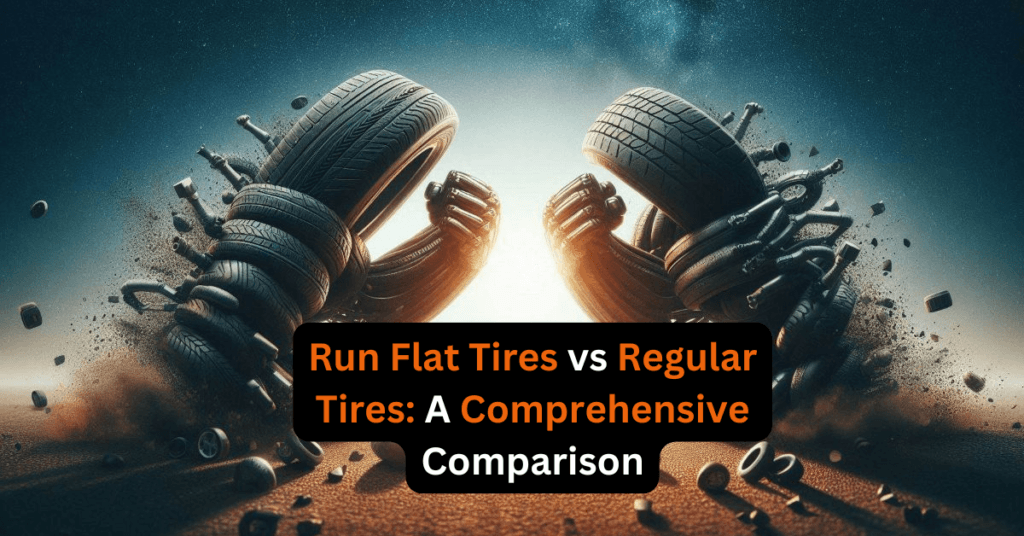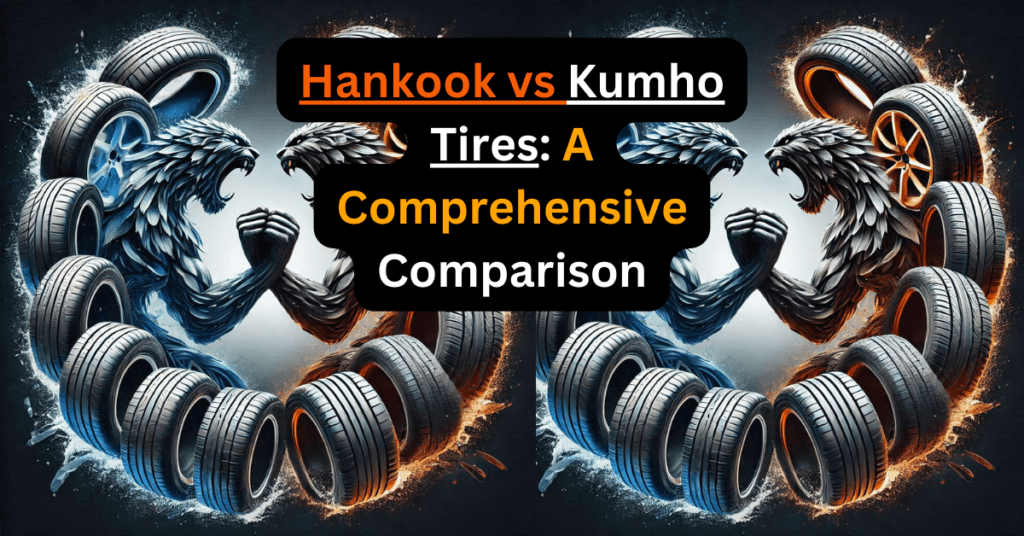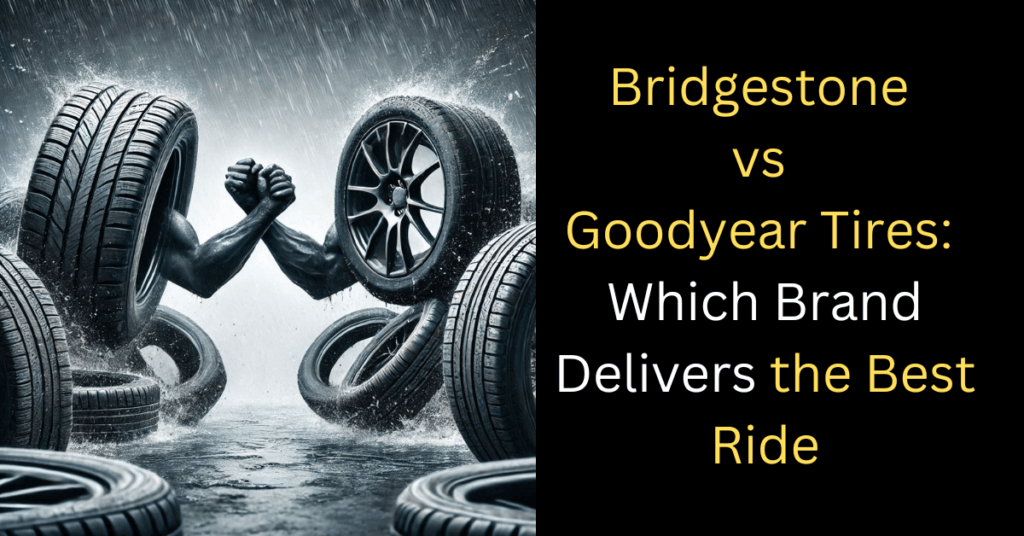Wondering about how often should you change tires on a car? In this comprehensive guide, we’ll explore the various factors that influence tire lifespan and provide you with the knowledge to make informed decisions about when to replace your tires.
Tires are the undervalued assets of our vehicles, providing the crucial connection between our cars and the road. Many drivers overlook the importance of timely tire replacement, but understanding when to change your tires is essential for safety, performance, and cost-effectiveness.
The 6-Year Rule: A General Guideline
One of the most widely accepted principles in the tire industry is the 6-year rule. This guideline suggests that tires should be replaced after six years from their date of manufacture, regardless of tread depth or obvious condition.
The reasoning behind this rule is rooted in the natural degradation of rubber compounds over time.
Even if a tire hasn’t seen much use, the rubber can deteriorate because of exposure to oxygen, UV rays, and temperature fluctuations. This aging process can lead to reduced performance and an increased risk of failure.
However, remember that the 6-year rule isn’t an absolute law.
Depending on your specific circumstances, tires might need replacement sooner or could potentially last longer.
To decide the age of your tires, look for the DOT code on the sidewall. The last four digits of this code indicate the week and year of manufacture.
For example, if you see “1019,” it means the tire was manufactured in the 10th week of 2019.
Mileage Matters: The 60,000 to 75,000 Mile Benchmark
For many drivers, mileage serves as the primary indicator of when to replace tires. On average, a set of tires lasts between 60,000 to 75,000 miles.
However, this range can vary significantly based on several factors:
Tire Type
Different types of tires have varying expected lifespans. All-season tires typically last longer than high-performance or off-road tires.
This is because of differences in rubber compounds, tread patterns, and intended use.
High-performance tires, designed for enhanced grip and handling, often sacrifice longevity for these performance benefits.
Driving Habits
Your personal driving style plays a significant role in tire wear. Aggressive driving, characterized by frequent hard braking, rapid acceleration, and sharp cornering, can significantly reduce tire life.
Smooth, consistent driving helps preserve tire tread and extend overall lifespan.
Road Conditions
The surfaces you frequently drive on impact tire wear. Rough roads, potholes, and debris can cause premature wear or damage.
If you regularly drive on poorly maintained roads or in areas with a lot of construction, you may need to replace your tires more often.
Vehicle Type
The weight and design of your vehicle affect tire wear. Heavier vehicles put more stress on tires, potentially reducing their lifespan.
Additionally, factors like wheel alignment, suspension setup, and weight distribution can influence how evenly your tires wear.
It’s worth noting that some high-quality tires can last up to 80,000 miles or more under ideal conditions. Conversely, budget tires or those used in harsh conditions might need replacement after just 20,000 to 30,000 miles.
Regular inspections and awareness of your driving conditions will help you gauge when replacement is necessary.
The Penny Test: Measuring Tread Depth
Tread depth is a critical factor in tire performance and safety. The general rule is to replace tires when the tread depth reaches 2/32 of an inch.
This measurement is based on safety standards and legal requirements in many jurisdictions.
The classic ‘penny test’ provides an easy way to check your tread depth:
- Take a penny and insert it into the tire tread with Lincoln’s head upside down and facing you.
- If you can see the top of Lincoln’s head, your tread depth is less than 2/32 inch, indicating it’s time to replace the tire.
While 2/32 inch is the legal minimum in many places, consider replacing tires when they reach 4/32 inch for better safety, especially in wet conditions. Tires with deeper treads provide better traction, improved handling, and more effective water dispersion, reducing the risk of hydroplaning.
For even more precise measurements, you can use a tread depth gauge. These inexpensive tools provide accurate readings and allow you to track tread wear over time.
Climate Considerations: The Impact of Weather on Tire Life
Your local climate plays a significant role in tire wear and aging. Extreme temperatures, both hot and cold, can speed up tire degradation:
Hot Climates
In hot climates, high temperatures can cause the rubber to break down faster. The heat can lead to increased oxidation of the rubber compounds, making the tire more prone to cracking and premature aging.
Additionally, hot road surfaces can speed up tread wear.
Cold Climates
In cold climates, frequent temperature fluctuations can lead to tire cracking. The repeated expansion and contraction of the rubber can cause small fissures to form over time.
Cold temperatures also make rubber less pliable, potentially affecting performance and wear patterns.
Seasonal Considerations
If you live in an area with distinct seasons, you might need to switch between summer and winter tires. This practice can extend the life of each set, as they’re only used for part of the year.
However, it’s crucial to remember that even when stored, tires continue to age.
Proper storage in a cool, dry place away from direct sunlight can help minimize aging during off-seasons.
The Hidden Dangers of Tire Age
Even if your tires look fine and have plenty of tread left, age can be a silent threat to tire integrity. As tires age, the rubber compounds break down, leading to reduced performance and increased risk of failure.
This degradation occurs regardless of how much the tire has been used.
Aged tires may experience:
- Reduced flexibility, leading to poorer handling and traction
- Increased risk of tread separation
- Greater susceptibility to punctures and blowouts
- Diminished ability to disperse water, increasing hydroplaning risk
These risks underscore the importance of the 6-year rule, even for tires that appear to be in good condition or have low mileage. Always check the manufacturing date when assessing your tires, and consider replacement if they’re approaching or exceeding six years of age.
Rotation and Maintenance: Extending Tire Life
Regular tire maintenance can significantly extend the life of your tires and improve overall vehicle performance. Here are key maintenance practices to adopt:
Rotation
Rotate your tires every 5,000 to 8,000 miles to ensure even wear. Different positions on the vehicle can cause tires to wear at different rates.
Front tires, especially on front-wheel-drive vehicles, often wear faster because of the added stress of steering and driving.
Regular rotation helps distribute wear more evenly, extending the overall life of the set.
Pressure
Check tire pressure monthly and before long trips. Proper inflation is crucial for even wear, fuel efficiency, and optimal performance.
Underinflated tires can lead to increased wear on the outer edges, while overinflated tires can cause excessive wear in the center of the tread.
Use the recommended pressure specified by your vehicle manufacturer, usually found in the driver’s door jamb or owner’s manual.
Alignment
Have your wheels aligned annually or if you notice uneven wear. Proper alignment ensures that your tires make even contact with the road, preventing premature wear on one side of the tire.
Signs that you may need an alignment include your vehicle pulling to one side or a vibration in the steering wheel.
Balancing
Balance your tires when you rotate them or if you notice vibration. Unbalanced tires can lead to uneven wear and create an uncomfortable driving experience.
Balancing involves adding small weights to the wheel to ensure it rotates evenly.
Proper maintenance extends tire life and improves fuel efficiency and vehicle handling. It’s a small investment of time and money that pays off in the long run through improved safety and reduced overall costs.
The Cost-Benefit Analysis of Timely Replacement
While replacing tires can be a significant expense, driving on worn or aged tires can be far more costly in the long run. The initial cost of new tires is offset by numerous benefits:
Safety
New tires provide better traction, shorter stopping distances, and improved handling, especially in adverse weather conditions. This enhanced performance can be the difference between avoiding an accident and being involved in one.
Fuel Efficiency
Worn tires can increase rolling resistance, forcing your engine to work harder and consume more fuel. New tires with proper tread depth and inflation can improve your vehicle’s fuel economy.
Vehicle Performance
New tires enhance overall vehicle performance, including handling, cornering, and ride comfort. This improvement makes driving more enjoyable but can also reduce wear on other vehicle components.
Avoiding Costly Repairs
Driving on worn tires increases the risk of blowouts or other failures that can lead to accidents. The cost of repairs from an accident, not to mention potential medical expenses, far outweighs the cost of new tires.
Peace of Mind
Knowing that your vehicle is equipped with safe, reliable tires provides invaluable peace of mind, especially for long trips or when driving in challenging conditions.
When you factor in these benefits, the cost of timely tire replacement becomes a wise investment in safety, performance, and long-term savings.
Environmental Considerations
Proper tire maintenance and timely replacement aren’t just about safety and performance – they also have significant environmental implications:
Fuel Efficiency
Well-maintained tires can improve fuel efficiency, reducing your vehicle’s carbon footprint. Proper inflation and alignment minimize rolling resistance, allowing your vehicle to use less fuel to cover the same distance.
Microplastic Reduction
Replacing tires at the right time ensures they’re not worn to the point where they shed excessive amounts of microplastics onto the road. These tiny particles can end up in waterways, contributing to environmental pollution.
Recycling and Repurposing
When replacing tires, look for recycling options. Many tire shops offer recycling services, and old tires can be repurposed for various uses:
- Playground surfaces
- Road construction materials
- Fuel for cement kilns
- Artificial turf infill
- Rubberized asphalt
By choosing to recycle your old tires, you’re contributing to a circular economy and reducing waste in landfills.
Eco-Friendly Tire Options
When shopping for new tires, consider eco-friendly options. Some manufacturers are developing tires with reduced rolling resistance, which can improve fuel efficiency.
Others are experimenting with sustainable materials or designing tires for improved longevity.
The Importance of Matching Tires
When replacing tires, it’s best to replace all four at once. This practice ensures optimal performance and safety.
However, if replacing all four isn’t feasible, replace them in pairs (both front or both rear).
Here’s why matching tires is crucial:
Handling and Stability
Mismatched tires can lead to unpredictable handling, especially in emergency maneuvers or adverse weather conditions. Different tread patterns or wear levels can cause your vehicle to respond unevenly to steering inputs or braking.
Traction Differences
Mixing tire types or having significantly different tread depths can affect your vehicle’s traction. This is particularly important in all-wheel-drive or four-wheel-drive vehicles, where traction differences can stress the drivetrain.
Even Wear
Matching tires promote even wear across all four wheels. This consistency helps maintain proper alignment and balance, extending the life of your tires and other suspension components.
All-Wheel Drive Considerations
For vehicles with all-wheel drive, it’s especially important to maintain consistent tire circumference. Even small differences can cause stress on the drivetrain, potentially leading to expensive repairs.
If you must replace only two tires, install the new tires on the rear axle. This configuration provides better stability and reduces the risk of oversteer in wet conditions.
Frequently Asked Questions
How long do car tires typically last?
Car tires typically last between 60,000 to 75,000 miles, or about 4 to 5 years for average drivers. However, this can vary significantly based on driving habits, road conditions, and tire quality.
Can I mix different brands of tires on my car?
While it’s possible to mix tire brands, it’s not recommended. Different brands may have varying performance characteristics, which can affect handling and safety. It’s best to use the same brand and model on all four wheels.
How often should I rotate my tires?
Most manufacturers recommend rotating tires every 5,000 to 8,000 miles. Regular rotation ensures even wear and can extend the life of your tires.
Is it safe to buy used tires?
Buying used tires can be risky. It’s difficult to know the tire’s history, including how it was used or stored. For safety reasons, it’s generally better to invest in new tires.
How does tire pressure affect tire life?
Proper tire pressure is crucial for tire longevity. Underinflated tires wear faster on the edges, while overinflated tires wear more in the center.
Maintaining the recommended pressure ensures even wear and optimal performance.
Are winter tires necessary if I have all-season tires?
In areas with severe winter conditions, winter tires provide superior traction and handling compared to all-season tires. If you regularly drive in snow or ice, winter tires are a worthwhile investment for safety.
How do I know if my tires are balanced?
Unbalanced tires often cause vibrations, especially at higher speeds. If you feel a vibration in the steering wheel, seat, or floorboard, your tires may need balancing.
Can tire rotation patterns vary for different vehicles?
Yes, the optimal rotation pattern can depend on your vehicle type (front-wheel drive, rear-wheel drive, all-wheel drive) and whether your tires are directional or non-directional. Consult your vehicle’s manual or a tire professional for the best rotation pattern for your specific setup.
How does driving style affect tire wear?
Aggressive driving, including hard braking, rapid acceleration, and fast cornering, can significantly increase tire wear. Smooth, consistent driving helps preserve tire tread and extend overall tire life.
What’s the impact of road conditions on tire life?
Rough roads, potholes, and debris can cause premature wear or damage to tires. If you frequently drive on poor road surfaces, you may need to replace your tires more often and should inspect them regularly for damage.
Key Takeaways
- Replace tires every 6 years, regardless of visible condition, because of rubber degradation.
- Most tires last 60,000 to 75,000 miles, but this varies based on numerous factors.
- Use the penny test to check tread depth – replace at 2/32 inch for legal least, 4/32 inch for better safety.
- Consider climate impacts on tire wear and the potential need for seasonal tires.
- Regular rotation, proper inflation, and alignment can significantly extend tire life.
- Timely replacement is a cost-effective safety measure that improves vehicle performance.
- Consider environmental factors in tire maintenance and disposal, including recycling options.
- When possible, replace all four tires at once for optimal performance and safety.




